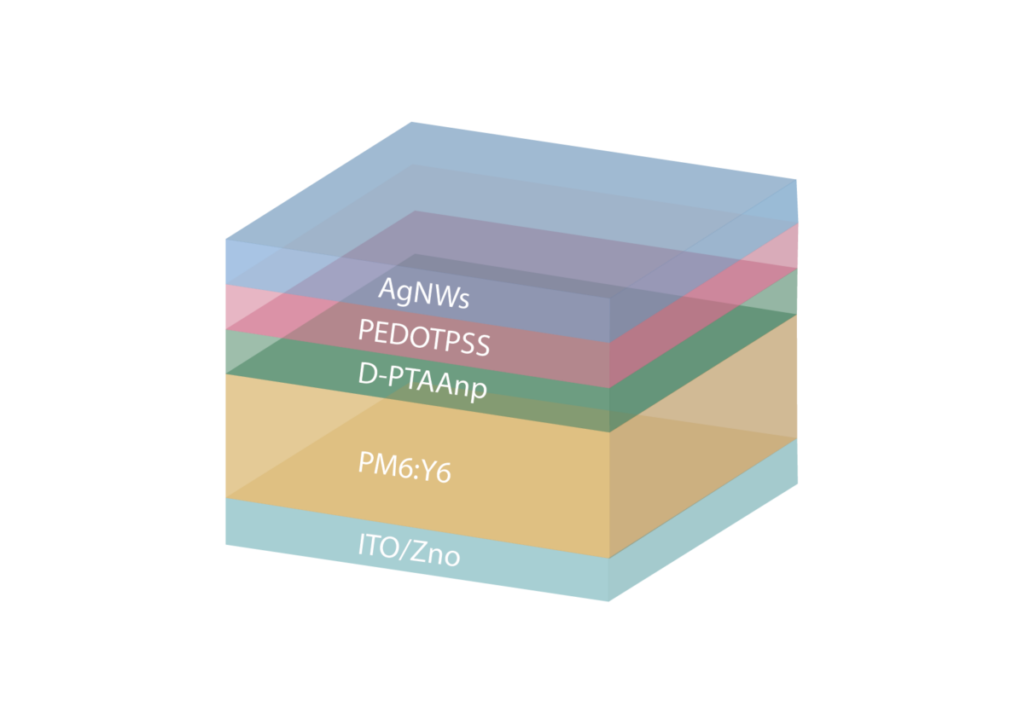A team of researchers in Germany has fabricated a non-fullerene acceptor-based organic photovoltaic cell with a two-layer solution-processed hole-transporting layer. It recorded an energy conversion efficiency of 17.1% and retained 93% of its original efficiency after 1,800 hours of continuous use of solar cells at 60 C.
A team of scientists from Germany’s Friedrich-Alexander-Universität did just that presented an organic photovoltaic cell based on a hole transport layer (HTL) based on PEDOT:PSS, a polymer known for its low cost and easy preparation properties.
In the research article “A polymer double-layer hole-transporting layer architecture for highly efficient and stable organic solar cells”, published in the magazine Joulethe researchers said that despite significant progress in laboratory-scale organic solar cells, there is still a lack of interface materials that can be processed on top of the active layer, are compatible with new non-fullerene acceptors (NFAs) and also provide sufficient stability long-term.
The scientists explained that the proposed HTL offers “exceptional stability” for cells based on NFA materials and inverted architecture. The double-layer HTL consists of doped poly[bis(4-phenyl)(256-trimethylphenyl)amine(PTAA)nanoparticlesandthepolymerPEDOT:PSS[bis(4-fenyl)(256-trimethylfenyl)amine(PTAA)nanodeeltjesenhetpolymeerPEDOT:PSS[bis(4-phenyl)(256-trimethylphenyl)amine(PTAA)nanoparticlesandthepolymerPEDOT:PSS
The researchers said that doped PTAA nanoparticles (D-PTAAnp) serve as a buffer layer, ensuring proper alignment of hole transport levels and enabling efficient hole extraction, while PEDOT:PSS forms a dense layer, which protects the active layer and “further ohmic makes contact possible. to the Ag electrode”.
When tested, the researchers found that the cell can achieve an energy conversion efficiency of 17.1%, which they say is one of the highest reported efficiencies for inverted OPV cells using PEDOT:PSS as HTL.
After 1600 hours under illumination with a metal halide lamp at room temperature, the device retained 95% of its original performance. After 1,800 hours of operation under a metal halide lamp at 60 C, the device retained 93% of its performance, leading the team to conclude the device’s “excellent operational stability.”
To demonstrate the universality of the interlayer, the researchers then selected four organic semiconductor composites, including PM7:Y6, PTQ11:Y6, PM6:DT-Y6 and PM6:BTP-eC9:L8-BO. The PM6:BTP-eC9:L8-BO device, based on the double-layer HTL, achieved a PCE of 17.1%.
“To our knowledge, this is one of the highest efficiencies reported to date for inverted OPV cells with solution-processed HTL,” the scientists said. “Overall, the performance and stability values achieved using a solution-processed top PEDOT:PSS layer provide an important tool for industrially scalable PM6:Y6 modules.
In December, another team of scientists from Germany’s Friedrich-Alexander University set an efficiency record of 14.46% for an organic PV module.
This content is copyrighted and may not be reused. If you would like to collaborate with us and reuse some of our content, please contact: editors@pv-magazine.com.

